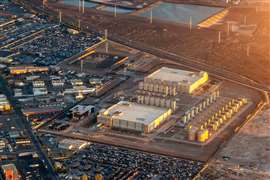New Holland confirms Tier 4 Final route
18 April 2012

Manufacturer New Holland will continue to use engines made by sister company FPT Industrial that rely on selective catalytic reduction (SCR) aftertreatment in order to meet the US Tier 4 Final/EU Stage IV exhaust emissions laws that come into force in 2014.
Mario Gasparri, the new president of CNH Construction equipment, New Holland's parent company, said the manufacturer was confident with its choice of technology.
"We are probably ahead of the game with SCR for Tier 4 Interim," Mr Gasparri said. "There are many advantages in terms of efficiency and maintenance, and we are also ready for the Final step already."
FPT Industrial will use SCR technology in addition to a diesel oxygenated catalyst to meet the strict 2014 laws, avoiding the exhaust gas recirculation (EGR) and diesel particulate filter (DPF) technologies that other major engine manufacturers have included in their Tier 4 Final/Stage IV designs.
Meanwhile, New Holland showcased its wide Tier 4 Interim construction equipment offering at Intermat. The company said it had now renewed 90% of its range with new products launched including heavy and mini excavators, wheeled loaders, backhoe loaders and telehanders.
For instance, the C series wheeled loader range has been completed with the introduction of two new models - the 11 tonne W110C and 12.5 tonne W130C. These machines are said to produce fuel savings of 10% with the Tier 4 Interim SCR engine technology.




